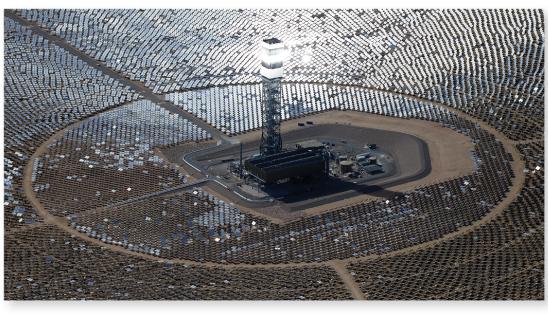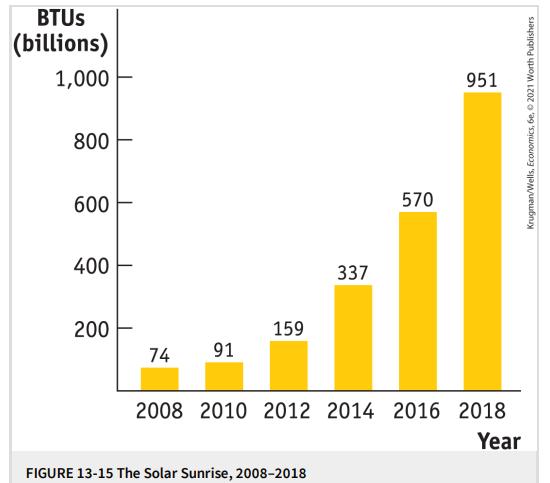The Solana power plant covers three square miles of the Sonoran Desert in Gila Bend, Arizona, about
Question:
The Solana power plant covers three square miles of the Sonoran Desert in Gila Bend, Arizona, about 70 miles from Phoenix. Whereas most solar installations rely on photovoltaic panels that convert light directly into electricity, Solana uses a system of mirrors to concentrate the sunʼs heat on black pipes, which convey that heat to tanks of molten salt. The heat in the salt is, in turn, used to generate electricity. The advantage of this arrangement is that the plant can keep generating power long after the sun has gone down, greatly enhancing its efficiency.

Solana is one of only a small number of concentrated thermal solar plants operating or under construction, and as Figure 13-15 shows, solar power has been rapidly rising in importance, with the amount of solar-generated electricity increasing over 10,000% between 2008 and 2018. There are a number of reasons for this sudden rise, but the 2009 stimulus — which put substantial sums into the promotion of green energy — was a major factor. Solana, in particular, was built by the Spanish company Abengoa with the aid of a $1.45 billion federal loan guarantee. Abengoa also received $1.2 billion for a similar plant in the Mojave Desert.

While Solana is a good example of stimulus spending at work, it is also a good example of why such spending tends to be politically difficult. There were many protests over federal loans to a non-U.S. firm, although Abengoa had the necessary technology, and the construction jobs created by the project were, of course, in the United States. Also, the long-term financial viability of solar power projects depends in part on whether government subsidies and other policies favoring renewable energy will continue, which isnʼt certain.
In terms of the goals of the stimulus, however, Solana seems to have done what it was supposed to: it generated jobs at a time when borrowing was cheap and many construction workers were unemployed.
QUESTIONS FOR THOUGHT
1. How did the political reaction to government funding for the Solana project differ from the reaction to more conventional government spending projects such as roads and schools? What does the case tell us about how to assess the value of a fiscal stimulus project?
2. In the chapter we talked about the problem of lags in discretionary fiscal policy. What does the Solana case tell us about this issue?
3. Is the depth of a recession a good or a bad time to undertake an energy project? Why or why not?
Step by Step Answer:






